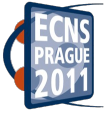 |
|
|
|
Nuclear analytical methods
Nuclear analytic methods have been developed and extensively used in The Department of Nuclear Physics (Academy of Science of Czech republic) since the early 60s of last century. In particular, neutron activating analysis and prompt methods of analysis with charged particles beam and beam of neutrons was handled. During the past period several analytic methods were innovated, practical experience of their application was obtained and collaboration with many Czech and foreign scientific enterprises and organizations was set.
The beam of the accelerated ions is applied for the surface modification of solids and for the analysis of their composition and structure. These methods have several unique characteristics which couldn't be substituted for other alternative approaches. In the Department of Nuclear Physics AS CR (UJF) we use Van de Graaff electrostatic accelerator on these purposes. In the last 10 years several equipments for analytical methods were assembled, such as: PIXE, RBS, ERDA, PIGE, NRM. Group of Nuclear Analytic Methods systematically partake in the study of synthesizing, structure and properties of advanced materials for microelectronic, optic, optoelectronic, cryogenic and materials with exclusive properties (microhardness, chemical resistance, biocompatibility, etc.). Surface structures and systems prepared in cooperation with Czech and foreign institutes by different methods (epitaxial grow, Czochralsky's method, ion implantation, deposition of plasma polymer, CVD, PCVD, magnetron sputtering, etc.) are analyzed in our laboratory with different analytical methods.
-
Elastic Recoil Detection Analysis
ERDA uses high energy (~1MeV/amu) heavy-ion beams to kinematically recoil and depth profile low atomic number target atoms. The heavy ion projectile only needs to have a greater mass than the target atom. Alpha particles are commonly used to obtain recoil spectrum for hydrogen and its isotopes.
Read more...
-
History of laboratory of nuclear analytical methods
Read more...
-
Neutron Depth Profiling
|
Neutron Depth Profiling (NDP) is an isotope specific, non-destructive nuclear analytical technique. It is used for the measurement of concentration profiles of elements in the near-surface region of solids. The technique, first reported by J. F. Ziegler et al. [J. Appl. Phys., 43 (1972) 3809] in 1972, exploits the existence of prompt exoenergetic non-resonant nuclear reactions of certain light isotopes (see Tab. 1) with low energy (< 10-2 eV) neutrons.
Read more...
-
Particle Induced Gamma-Ray
PIGE is a versatile technique, which complements other ion beam techniques (especially PIXE) for sample analysis and non-destructive depth profiling. It is the most common application of nuclear analysis. The PIGE method is mostly based on nuclear reactions (p, g), (p,p´g), (p, a g) induced by MeV protons, where prompt nuclear gamma-rays are produced.
Read more...
-
Particle Induced X-Ray Spectroscopy
PIXE is method in which X-ray emission is used for elemental analysis. T he high energetic proton beam excites, due to inner-shell ionization, the emission of characteristic X-rays from the sample atoms. In the true sense, PIXE is not a nuclear technique, since the ionisation of the atoms by the ion beam and the subsequent emission of characteristic X-rays are purely atomic electromagnetic processes.
Read more...
-
RBS-channeling
RBS-channeling spectrometry - enables us to investigate crystalline materials. The signal of the impurity and host lattice in RBS spectra is separated by scattering kinematics . The angular yield curve (scan) is obtained by monitoring the yield of the impurity and host lattice along the channeling axis using ion beam impact angle changing. From the angular yield curves of the axial channels in virgin material we obtain the impurity position in the measured cut. In order to determine the lattice position of impurities several relevant crystallographic directions have been selected.
Read more...
-
Rutherford Backscattering Spectrometry
RBS is most commonly used non-destructive nuclear method for elemental depth analysis of nm-to-mm thick films. It involves measurement of the number and energy distribution of energetic ions (usually MeV light ions such He+) backscattered from atoms within the near-surface region of solid targets. From such measurement it is possible to determine, with some limitations, both the atomic mass and concentration of elemental target constituents as a function of depth below the surface.
Read more...
|
| |
|

|

|
|





